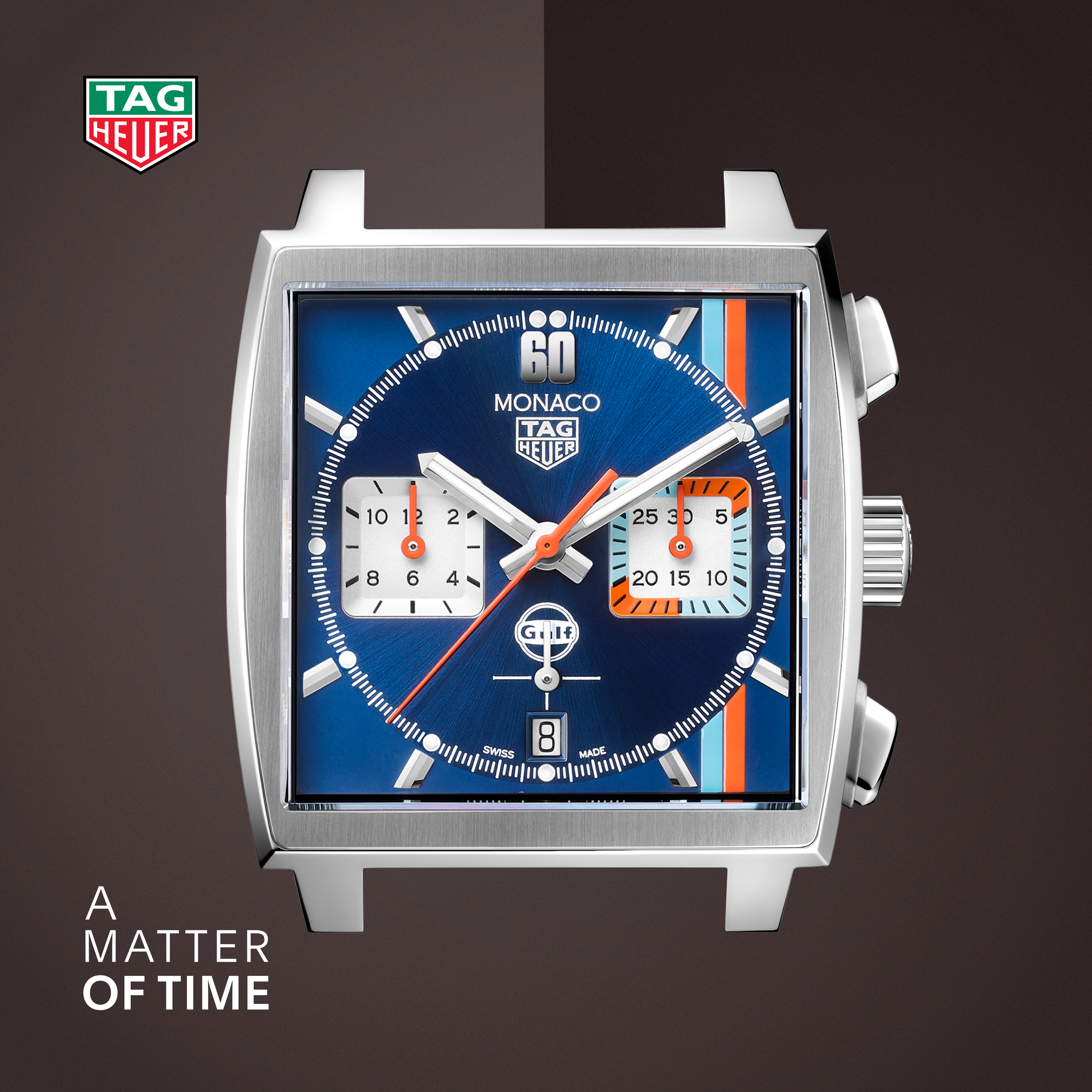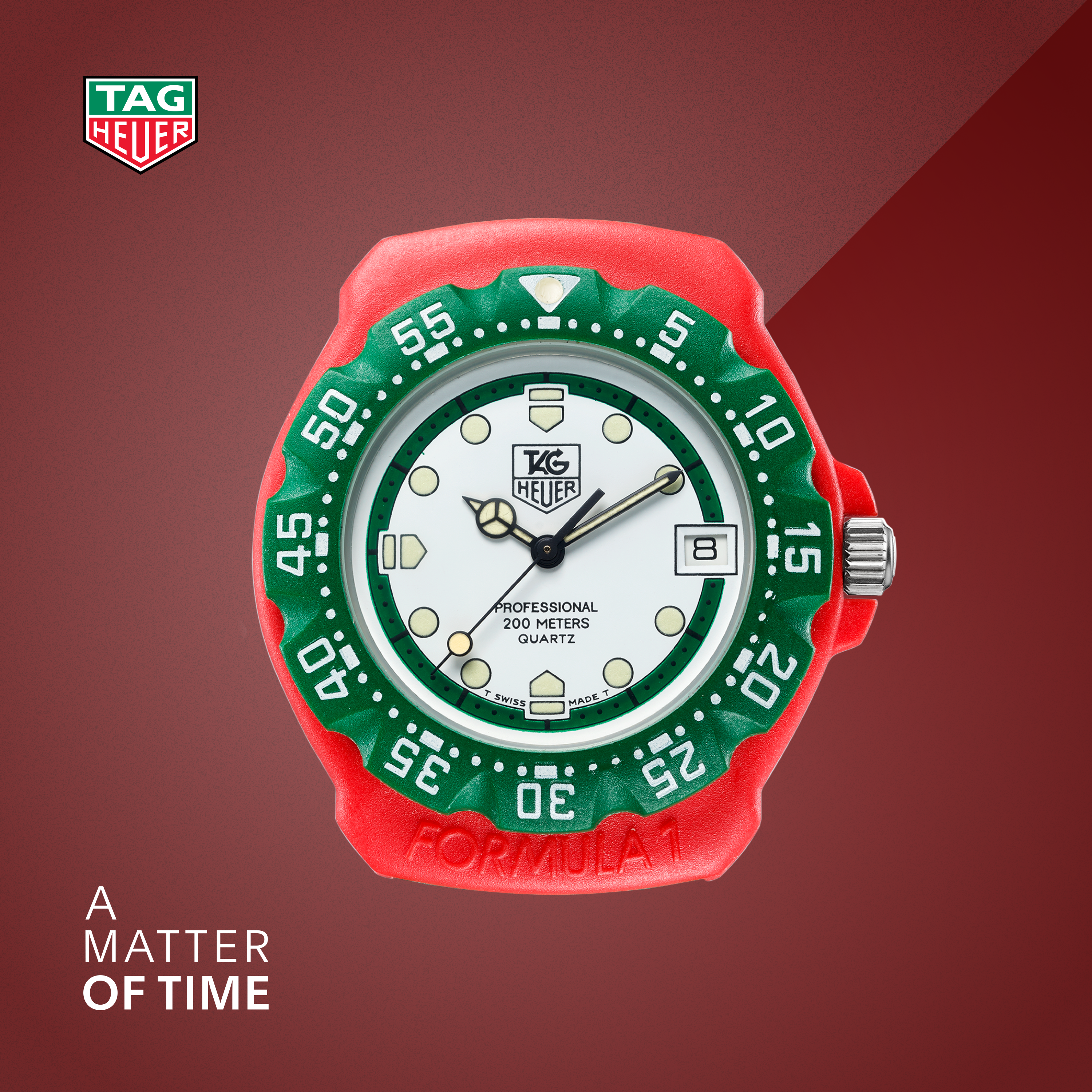Episode Transcript
[00:00:04] Welcome to a matter of time, a podcast by Tag Heuer. I'm your host Nicholas Biebeck, heritage director at TAg Heuer and a lifelong enthusiast for fine swiss watchmaking.
[00:00:15] In this season, we're discussing the history of the iconic Monaco collection. So far we've covered the first 30 years of the collection, but now we're jumping to the mid two thousands. 2004 to be precise.
[00:00:32] Since the relaunch of the collection in 1997, an important moment had taken place in the company. In 1999, LVMH Group had acquired the brand and from the 1 January 2000 we'd officially become part of the LVMH group.
[00:00:47] With that in came a new CEO with a new vision for the business.
[00:00:52] Whilst Heuer had historically been a very high end brand, competing with the likes of Rolex and Amiga during the eighties and nineties, we dramatically expanded the visibility of the maison through the likes of our partnerships with Formula One and amazing advertising campaigns including don't crack under pressure and success. It's a mind game.
[00:01:15] But during this period, the product had not seen the same evolution and technical innovation that it had historically. Historically, it was a chance for the brand to revisit its roots very much focused on technical innovation. Something that had been important from the founding in 1860 with Eduard Heuer, through key moments such as the micrograph in 1916, the caliber eleven in 1969, and now a new future needed to be defined, focused on this technical discipline.
[00:01:44] For this flagship halo, products needed to be presented concept watches that excited the imagination and laid down a flag within the watchmaking industry as tag Heuer being a focus for innovation.
[00:01:57] This had been initiated with pieces such as the micrograph, a mechanical stopwatch that time to one 100th of a second and later would continue with the micro timer, micro girder and micro pendulum series of pieces. The micro tourbillon s many, many great technical innovations that were really focused as concept pieces, often costing in excess of 100,000 francs, not really designed for public consumption, but for us to present a new strategy and a new vision for the maison.
[00:02:27] It's interesting to look at the development of the Monaco V four before we get to the actual launch of the collection.
[00:02:35] Initially, the idea of placing belts into the movement of a watch came from a micro engineer called Jean Francois Rochonnet. He had concepted this idea of introducing belt drive to replace gear trains. But commercialising the project and industrialising it was a different matter entirely. Tag Heuer would pick up the mantle and carry it forward, focusing with our best engineers and research and development teams to first present the watch in 2004 in concert form. Before commercializing the watch in 2009, a lot of changes would take place around the architecture and the conception of the piece. Supposedly, it was Philippe Dufour who was even assisting in the commercialisation of the piece, who was assisting in the development and finessing of the technical aspects of the movement. But the reason it was so complicated was simply because it had never been done before and utilized so many new ideas at the same time.
[00:03:29] The whole premise of introducing belts rather than gears was really to reduce the need for lubrication with rubber and polymer belt, not requiring oils to keep them in control and not wearing out, but also to improve shock resistance. If you jar two gears against each other, they might damage the teeth and compromise the performance of the movement. Whereas with a belt, due to its elasticity, you improve the fact that if you shock the movement, it has a much better chance of sustaining this. This was also important because the watch introduced another new novelty, a linear winding mass.
[00:04:05] It was a first for the watchmaking industry. So, rather than having a rotor that spins around a central hub, or even a micro rotor, such as the calibre eleven that sits within the movement itself, this used an ingot of palladium, very heavy metal, that would bounce back and forth down the centre of the case, back of the movement, that would then wind the four barrels that were connected to it at an angle.
[00:04:30] The other interesting feature of the watch is that, rather than using traditional rubies to reduce wear on pivots, in fact there were very small ball bearings. These are things that are common in the automotive industry, where you have large ball bearings that would sit on things like the crankshaft or different pulleys, or even a wheel bearing. But in the watchmaking industry, it was almost unheard of, the obvious reason being that you have to make the ball bearing so small that the individual balls are almost impossible to spot with the human eye. They are absolutely minuscule and can often look like a piece of dust, but are carefully machined spheres that allow for the gears and sprockets to spin freely.
[00:05:11] All of these distinctive elements would, of course, require a new case. And for the third time in the monaco's lifespan, a new case aesthetic would be presented with a very large sapphire crystal that stretches across the front of the watch and the sapphire windows that present the barrels and the linear winding mass on the case back. The case would also be slightly thicker, of course, to accommodate the new movement. But actually on the wrist, the overall dimensions of the height and the width of the piece are not that dissimilar from the version of the case that had launched in 1997.
[00:05:43] It's actually quite wearable, particularly in stainless steel. Although when you look at some of the precious metal versions that have launched, including platinum and gold, the mass of the piece can make it quite challenging to keep flat on the wrist because it wants to rotate so much. They're really quite impressive things, just due to the sheer weight of the watches.
[00:06:02] When the piece launched, it was met with almost universal acclaim and surprise that a watch such as this would be developed by Tag Heuer and would even see the light of day.
[00:06:12] In the years since the initial commercial pieces being available, as mentioned, there's been a number of different editions. Among my favourites are the full black carbon version, called the Monaco V four Phantom. There's also a very handsome version in gold and with a ceramic centre. There was even an absolutely amazing version, a tourbillon Monaco V four, that would launch in 2016, but was produced in extremely limited quantities, with the tourbillon cage actually being driven by a belt. It's absolutely amazing when you can see this piece in person, but it's extremely unusual, because probably only ten or so pieces were ever manufactured.
[00:06:49] Today, the V four holds a very special place in many people's hearts. We often get people asking for the watch in our boutiques and in fact, we do still produce and present a very small quantity every year to our very best clients. Of course, the price is to match with such level of complexity, and we see the retail price anywhere between 70,100 thousand swiss francs, depending on the execution on what metal is used.
[00:07:16] For me, what makes the Monaco V four so interesting is this amazing direct line that it paints between our brand in watchmaking and the world of motorsport and the automobile. So many codes are carried over from the belt drive, which you would often see to drive the overhead cams on engines, or the ancillary, such as the alternator on the front of an internal combustion motor, to the use of ball bearings, to the choice of materials, to even the aesthetic of the overall watch, and even the name V four. We're often talking about an engine configuration, the V eight or the V twelve, that been made famous from the last likes of Ford or Ferrari. But actually, this V four idea came from the four barrels that power the movement and the v shaped aesthetic to the bridges on the front of the watch.
[00:08:00] It's an incredible piece. If you're lucky, you'll get to see one. I remember when I was young, specifically travelling into London to go and handle a v four myself. It was quite a captivating experience and remember this must have been perhaps 2009 or 2010, just after the launch of the collection. It was almost like a pilgrimage to go and see this amazing piece of watchmaking engineering that everyone at the time was talking about.
[00:08:25] Its legacy is unusual within the organization. We hold it in great high regard, but it's been quite challenging to develop the movement further and to bring it to a new direction. Saying that there are lots of elements, including the idea of the belt drive, are often being bounced around with our internal teams. So let's see what the future might hold for this idea of a belt driven tag coil watch.
[00:08:49] I hope you've enjoyed today's episode of a matter of time. Please do let us know what you think in the comments wherever you get your podcast, and I'm looking forward to welcome you for our next episode in the series where we'll be discussing this incredible relationship we have with the team at Gulf Oil.
[00:09:04] Thanks for listening. See you next time. 19.


